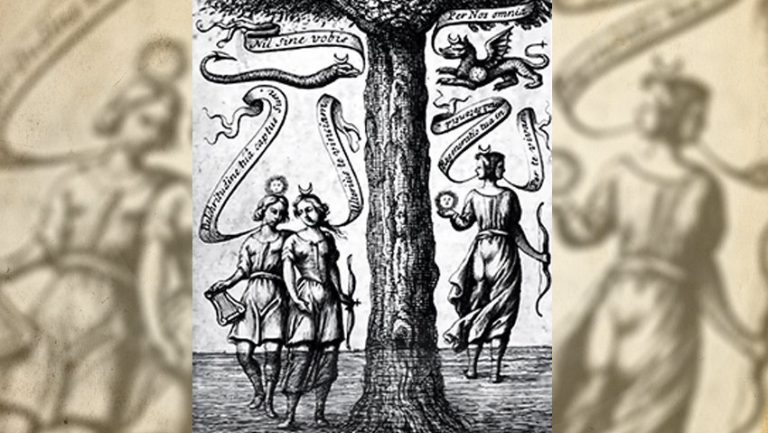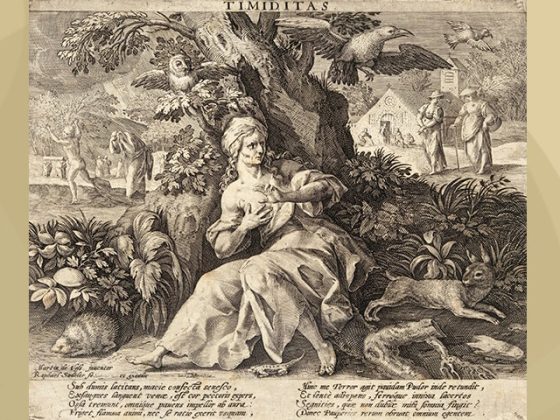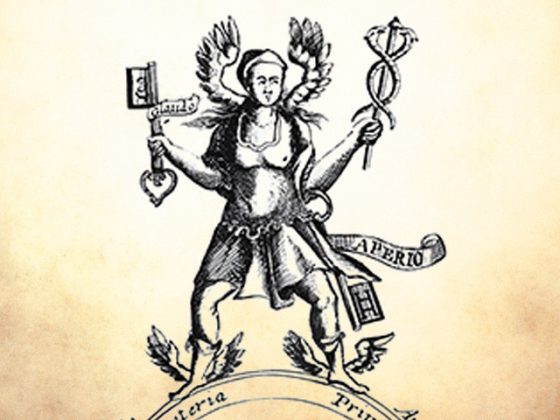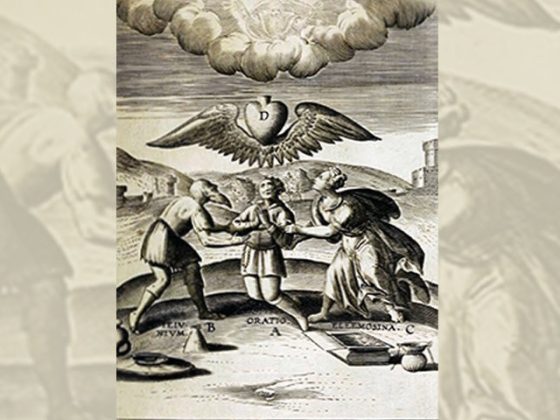Dearly beloved reader friends:
I am pleased to send you this engraving entitled…
…VIRTUS UNITA FORTIOR
─‘United virtue is stronger’─
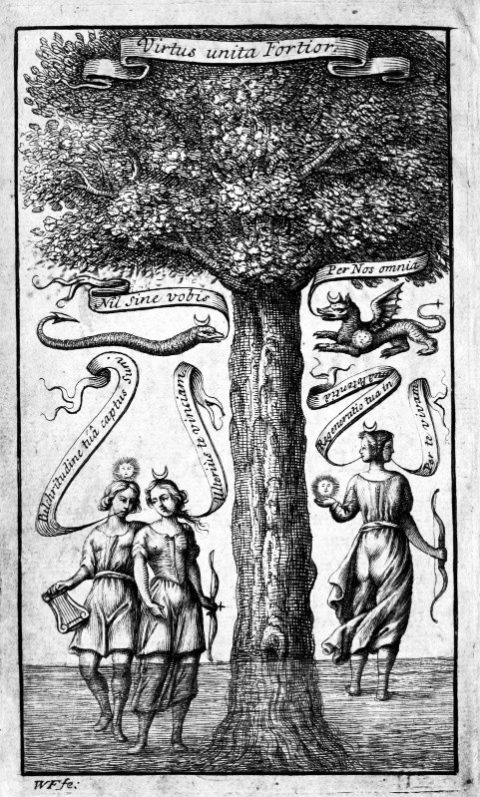
It is the frontispiece of a book published in 1690 in London and entitled Aphorismi Urbigerani ─ certain rules that clearly demonstrate the three infallible ways of preparing the great elixir orcirculatum majus of the philosophers: discovering the secret of secrets and detecting the errors of vulgar chemists in their operations, contained in one hundred and one aphorisms─, to which are added the three ways of preparing the vegetal elixir or circulatum minus. All deduced from the experience that never errs.
It is by Baro Urbigerus ─a writer of the 17th century─, who defined himself as “a servant of God in the kingdom of Nature” and whose motto is Experto crede ─'trust an expert'─.
This engraving, patient reader, takes us back again to the study of the Sacred ARCANUM A.Z.F. and its alchemical concomitances.
In this image we are told about the virtues of our aqueous matter and its potentialities, described by the alchemist Baro Urbigerus.
In trying to comprehend the present engraving, we must comment that, first, we can see in the upper part of it a serpent on the left side and a dragon on the right side. The serpent is our Mercury, our creative energy, and the dragon is our Fire. Both powers are the basis of our future PHILOSOPHER'S STONE.
Both creatures carry on their heads the astrological symbol of the moon because, as long as the Great Work has not been done, they are lunar energies that will have to be transformed into solar energies.
The dragon, on the other hand, carries a SUN on its side to indicate that, in due course, it will become an igneous element.
The tail of the serpent ends in a pointed shape to indicate that it is a powerful, serpentine, watery force. The dragon, although it carries a moon on its head, like the serpent, has its tail ending in a cross. This is to show us that igneous power is controlled by the hieroglyph of the cross, that is, by the crossing of igneous potentialities mixed with mercurial waters. The dragon is winged because fire always rises to the heights, this is how this element is.
The tree, friends, is the tree of the SCIENCE OF GOOD AND EVIL ─sexuality─, for this reason all the represented drama unfolds around it.
The Latin phrase Nil sine vobis ─ ‘Nothing without you' ─ is pronounced by the serpent to indicate that in Nature nothing exists without these potentialities.
At the same time, the other phrase that the dragon pronounces: Per nos omnia ─ ‘Through us everything' ─ emphasizes that nothing is set in motion without the help of fire.
On the left side of our image, we find the god Apollo and the goddess Diana. Apollo says to Diana: Pulchritudine tua captus sum ─ ‘I have been captivated by your beauty'─, carrying a sun on his head. Alchemically it is said that the sun ─Sulfur─ is attracted to the moon ─Mercury─. This is essentially certain for the Great Work to start.
For her part, Diana answers Apollo: Ulterius te vinciam ─'I will bind you even more'─ because the more the Arcanum A.Z.F. is practiced, the more Mercury will merge with Sulfur in our nature.
On the right side of the image we see both creatures ─Apollo and Diana, Mercury and Sulfur─ converted into one, forming a single BEING. Apollo, on one side, holds a sun, while Diana carries a bow on her right. Apollo carries both the sun in his other hand and a moon on his head. When this happens, Apollo exclaims: Regeneratio tua in mea potentia ─ ‘Your regeneration is in my power'─, because sexual alchemical regeneration is only possible through fire. To which Diana replies: Per te vivam ─'I will live for your sake'─ because Mercury only bears fruit when fire keeps it fecundated.
It is good to note, dear readers, that in the image on the left Diana has a bow in her hands and the arrow of this bow is replaced by a cross, and some read it as the hieroglyph or the symbol of Gaia, the Earth.
Likewise, Apollo appears carrying a lyre that rests on one of his thighs. We must not forget that Apollo, symbolizing harmony in creation, is obviously represented with a musical instrument.
The author ends his engraving with a text that we express for our readers:
“We have so clearly set forth in our One Hundred and One Aphorisms all the difficulties, and taught so extensively the theory and the complete practice of the Hermetic Mystery, that any ingenious lover of chemistry will not only be able to comprehend the most abstruse writings of the philosophers, but also to perform whatever real experiments are expected in the progress of our Heavenly Art.
By the Green Dragon is meant our first indeterminate matter, which comprises all our principles. But this Dragon, by copulating with the serpent, is compelled to submit to it, degrading itself from its indeterminate being to the production of our second way. Apollo, with the Sun on his head, and Diana, with the crescent Moon, embracing each other, show our third path and the continuation of the first and second [phases of the transmutatory work].
In this scheme, as well as in our aphorisms, all the principal points of faith and religion, contained in the volumes of the Old and New Testaments, are mystically exposed. From this it is evident that the contemplation of Nature truly leads to the comprehension of those heavenly truths, solely by means of which we can hope to attain the enjoyment of the blessed immortality, to which, as the true and ultimate end of our creation, all our efforts must be directed.”
I now add a few quotations for your reflection:
“You cannot see what you are, what you see is your shadow.”
Rabindranath Tagore
“A man's worth is not determined by what he possesses, nor even by what he does, but is directly expressed by what he is in himself.”
Aristotle
“Each one is as God made him and even worse many times.”
Cervantes
“To cease to be is not the same as not to have been.”
Humberto Díaz Casanueva
“We know what we are, but not what we can be.”
Shakespeare
DONA NOBIS PACEM.
─‘Give us peace’─.
KWEN KHAN KHU


